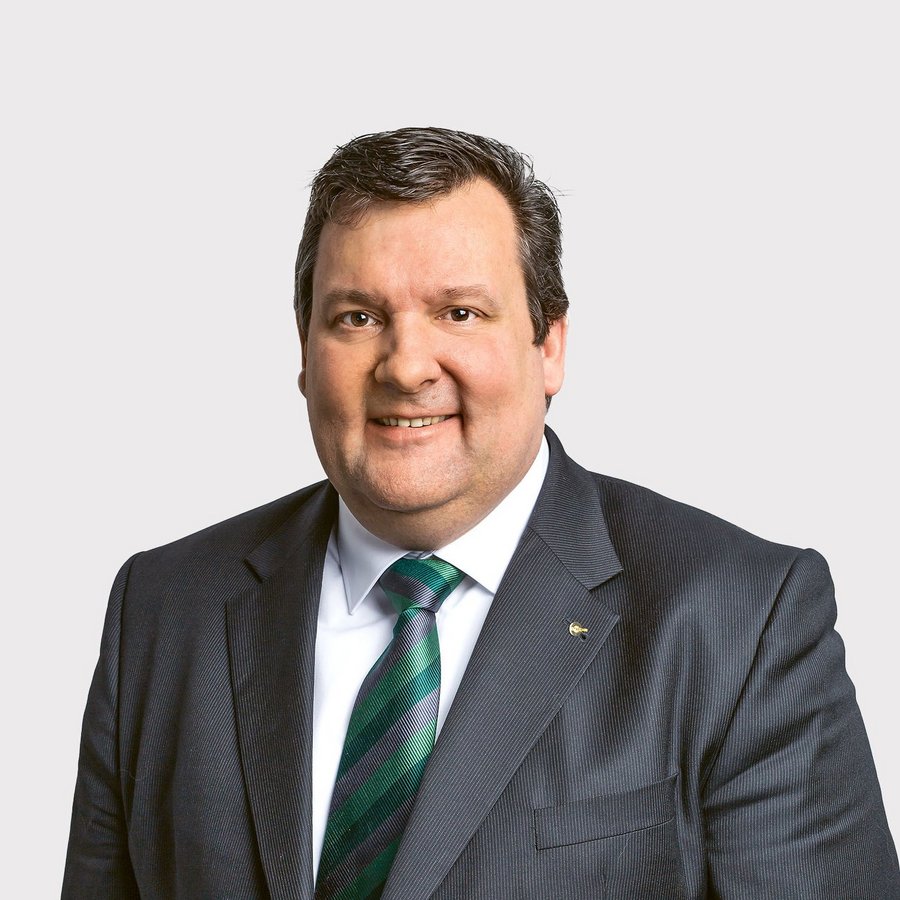The entire life cycle at a glance
17.03.2023
Interview as PDF
The development, manufacture and supply of products and technologies for material-handling solutions play the central role in Interroll's business model. Jens Strüwing, Executive Vice President Products & Technology of the Interroll Group, describes how the company is pursuing its sustainability goals in this area, which benefit not only its customers and users, but the company itself.
What is your sustainability strategy for product development?
Jens Strüwing: We have been approaching the topic of sustainability in product and technology development from a holistic perspective for years. We basically look at our products over their entire life cycle – from “the cradle to the grave,” so to speak. This applies both to the further development of existing solutions and to disruptive innovations. Already in the first phase of development work, we ask ourselves which materials are suitable for later recycling in a circular economy. In this early phase, we also aim to develop automation solutions that significantly reduce the energy consumption of our systems and ensure an ergonomic, safe and low noise working environment. Other objectives include sustainable packaging materials with high packing density and the selection of suppliers that meet our Group-wide sustainability criteria and offer short transport distances for a low carbon footprint.

We basically look at our products over their entire life cycle – from ‘the cradle to the grave,’ so to speak.”
Top quality, simplicity and speed are Interroll's core promises to customers. Do these values also pay off in the sustainability strategy?
Absolutely. As part of our quality strategy, we focus on robustness and durability instead of disposable solutions. Our products are fundamentally based on technologies that have proven themselves in continuous use and, in many cases, are suitable for renewed use after a general overhaul. One example is our drum motors, for which we offer customers a repair service. Another is our globally successful sorter platform, which, unlike other solutions, is based on a robust and energy-efficient mechanical principle. It is not uncommon for many users to have Interroll sorters in operation for more than 10 years and with very low maintenance costs. That’s why we were able, for example to take a crossbelt sorter, which had been in continuous operation for six years at a large contract logistics company, and retrofit it for a contract logistics company without any major effort.
And what approach do you use to reduce the carbon footprint of your warehouse operations and those of your material flow solutions?
For our solutions, we use compact, energy-efficient drives that set industry standards and achieve efficiencies of over 90 percent. No less important is our decentralized drive concept in the low-voltage range, which offers energy savings of up to 50 percent compared to centralized concepts. This efficiency is achieved through solutions that seamlessly integrate hardware, software and electronics. At the same time, the modularity of our platform ensures that customers can always use drives with power consumption optimally tailored to their specific conveyor application. We also use our know-how to help customers modernize existing plants and make them more energy efficient without major effort. Independent experts have confirmed energy savings potential of around 50 percent in customer projects.
Does this approach also apply to new product areas?
Of course. One example is the new Special Hygienic Conveyor (SHC). With this conveyor, the energy efficiency benefits offered by the globally popular Modular Conveyor Platform (MCP) are now available for the first time to system integrators and users who must meet special hygiene requirements, such as those in the food industry. We also launched a disruptive innovation solution in the meat processing sector that makes a key process step in meat cutting significantly more hygienic. Measurements have shown that the germ load of processed meat products is significantly reduced compared to the previously common process. In this way, we help extend the shelf life for chicken products and prevent valuable food from being wasted.
What sustainability measures are you taking at your production sites?
With the Kaizen-based Interroll Production System (IPS), we have had a very effective way of reducing waste throughout the Group for years. This tool also allows sustainability standards to be implemented quickly and uniformly at the sites. One example is lighting, which we have converted to LED technology everywhere. It also enables us to implement binding energy-saving goals worldwide in a targeted manner and with the most effective leverage. Depending on site conditions, we achieve this through low-energy construction measures, combined heat and power plants with very high efficiencies, charging stations for employees' electric cars and photovoltaics. As for other tasks, we use the Group's own knowledge platforms, which allow us to quickly and effectively use the know-how that we have acquired at all our sites around the world.